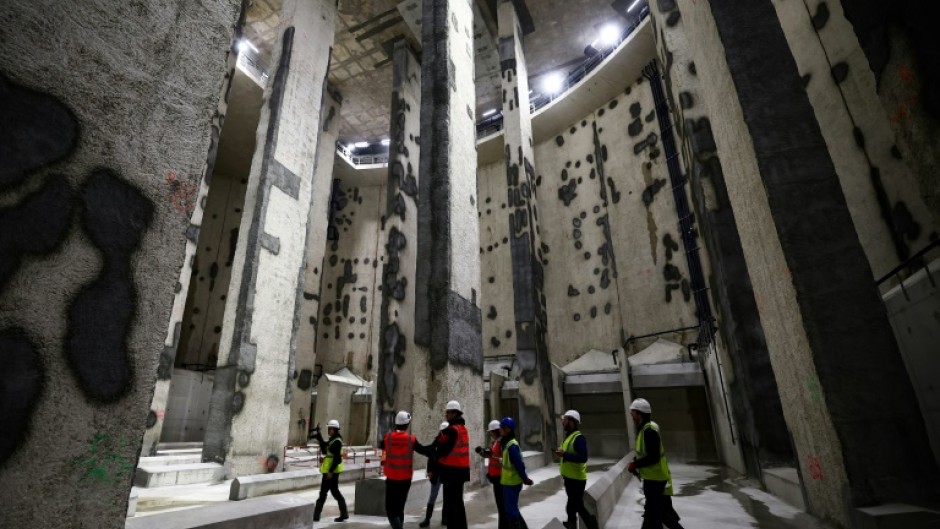PARIS - It has no spire, stained glass windows or nave, but the cavernous underground stormwater facility set to be inaugurated in Paris has been compared to Notre-Dame cathedral, which is being rebuilt after a fire.
The giant new structure, burrowed 30 metres deep in the ground next to a train station, is a key part of efforts to clean up the river Seine which is set to host swimming events during the Paris Olympics in July and August.
"I like to say that we're building two cathedrals," deputy Paris mayor Antoine Guillou told reporters during a visit to the site in mid-March. "There's the one above ground that everyone knows, Notre-Dame. And then there's the one underground."
The stormwater facility in western Paris by the Austerlitz transport hub shares the the same sense of scale and space as the Gothic masterpiece, but none of its ornate features.
Fortunately for Olympic open-water swimmers, it will be operational for the Games, with Mayor Anne Hidalgo set to inaugurate it on Thursday morning after more than three years of work.
The so-called "Austerlitz basin" can hold the equivalent of 20 Olympic swimming pools' worth of water and will be called into action whenever heavy rain crashes down on the French capital.
It is the latest addition to the Parisian underground sewer system, an urban innovation when it was constructed in the mid-19th century which has its own dedicated museum in the capital.
One of its key features is that it collects sewage, domestic waste water and rain water in the same tunnels before directing them to treatment centres.
In the event of major rainstorm, the system is quickly overwhelmed, which means it depends on around 40 valves that release excess water containing untreated sewage directly into the Seine.

